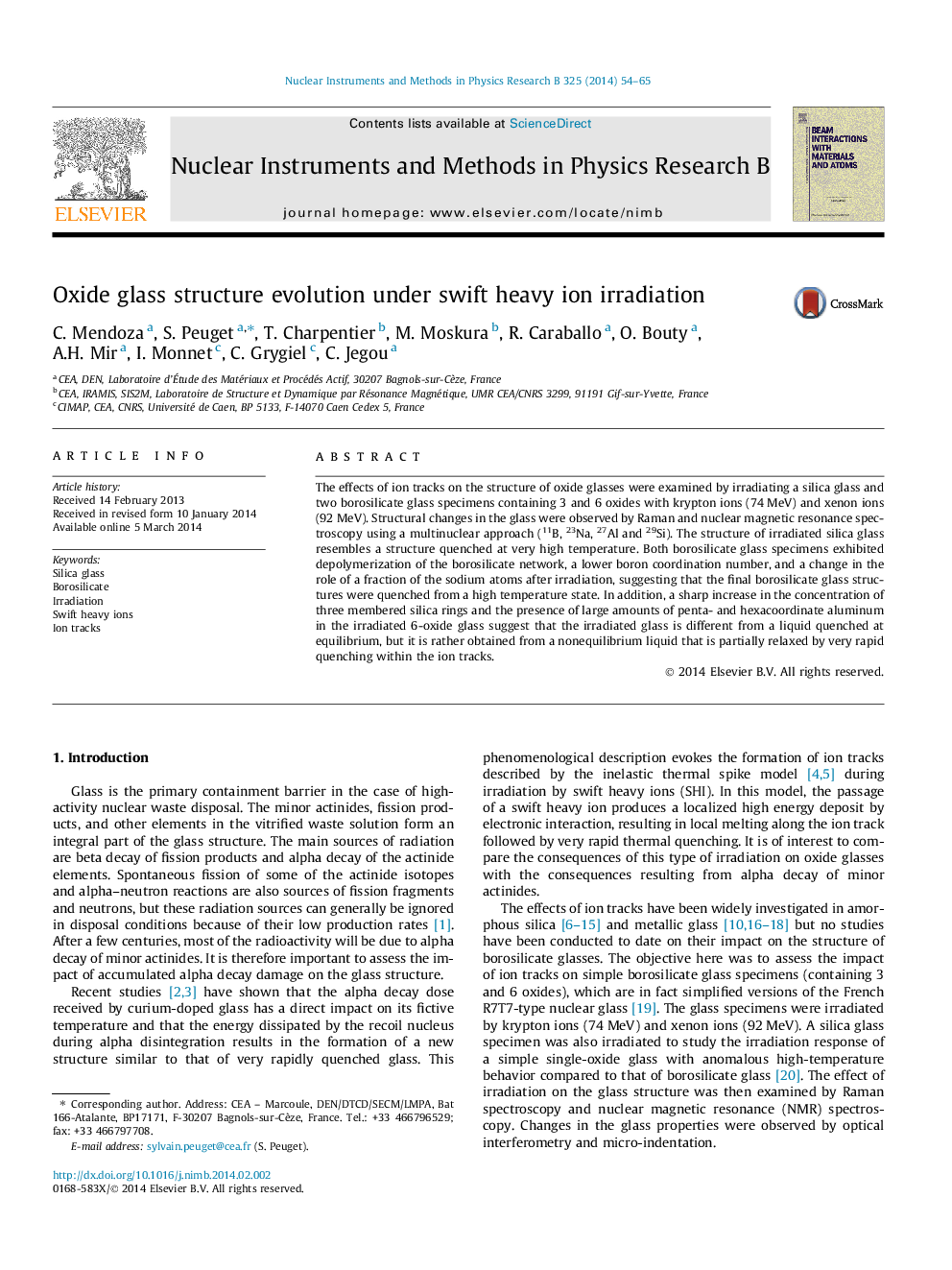| Article ID | Journal | Published Year | Pages | File Type |
|---|---|---|---|---|
| 1681308 | Nuclear Instruments and Methods in Physics Research Section B: Beam Interactions with Materials and Atoms | 2014 | 12 Pages |
•Structure of SHI irradiated glass is similar to the one of a hyper quenched glass.•D2 Raman band associated to 3 members ring is only observed in irradiated glass.•Irradiated state seems slightly different to an equilibrated liquid quenched rapidly.
The effects of ion tracks on the structure of oxide glasses were examined by irradiating a silica glass and two borosilicate glass specimens containing 3 and 6 oxides with krypton ions (74 MeV) and xenon ions (92 MeV). Structural changes in the glass were observed by Raman and nuclear magnetic resonance spectroscopy using a multinuclear approach (11B, 23Na, 27Al and 29Si). The structure of irradiated silica glass resembles a structure quenched at very high temperature. Both borosilicate glass specimens exhibited depolymerization of the borosilicate network, a lower boron coordination number, and a change in the role of a fraction of the sodium atoms after irradiation, suggesting that the final borosilicate glass structures were quenched from a high temperature state. In addition, a sharp increase in the concentration of three membered silica rings and the presence of large amounts of penta- and hexacoordinate aluminum in the irradiated 6-oxide glass suggest that the irradiated glass is different from a liquid quenched at equilibrium, but it is rather obtained from a nonequilibrium liquid that is partially relaxed by very rapid quenching within the ion tracks.
